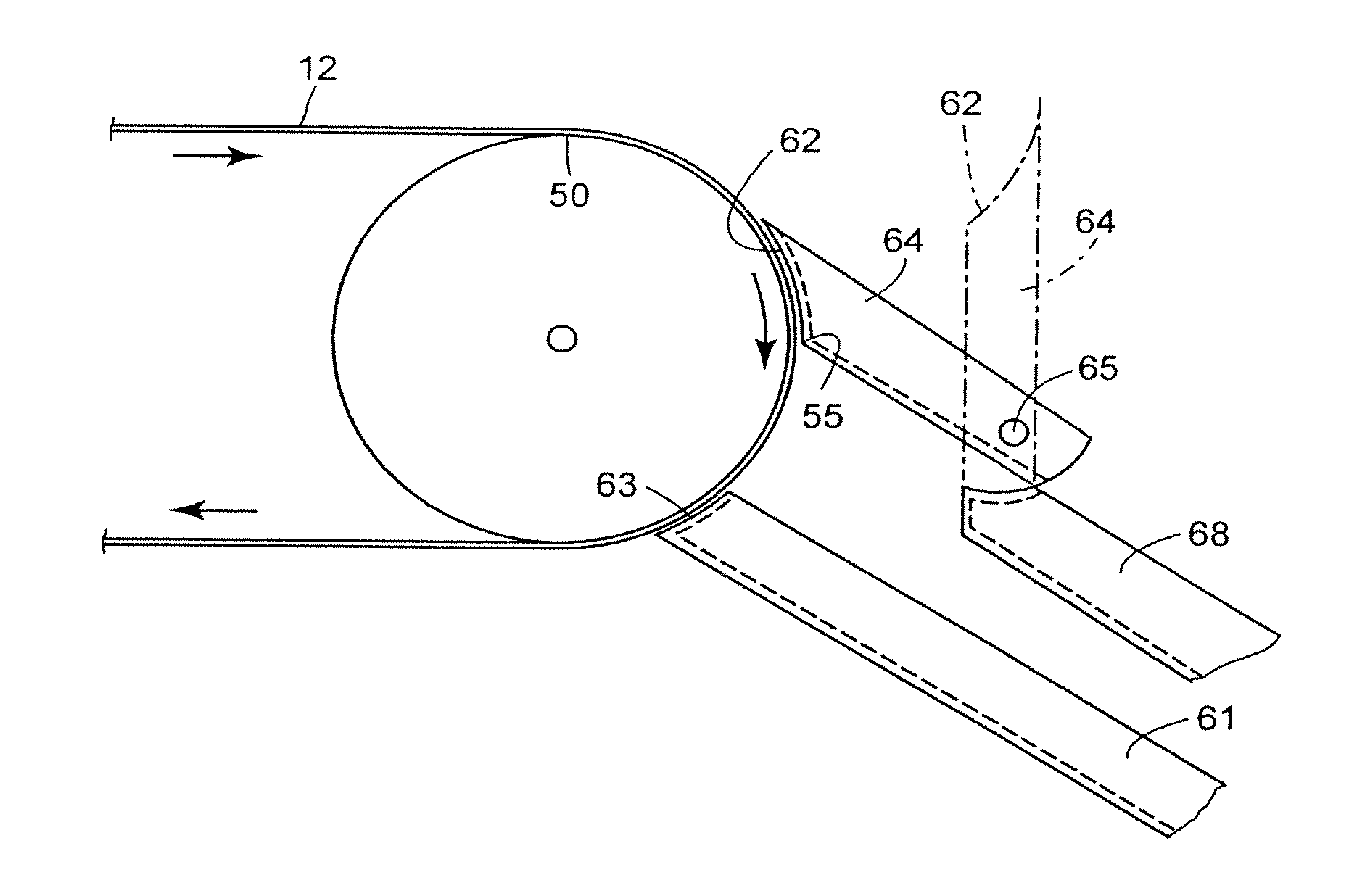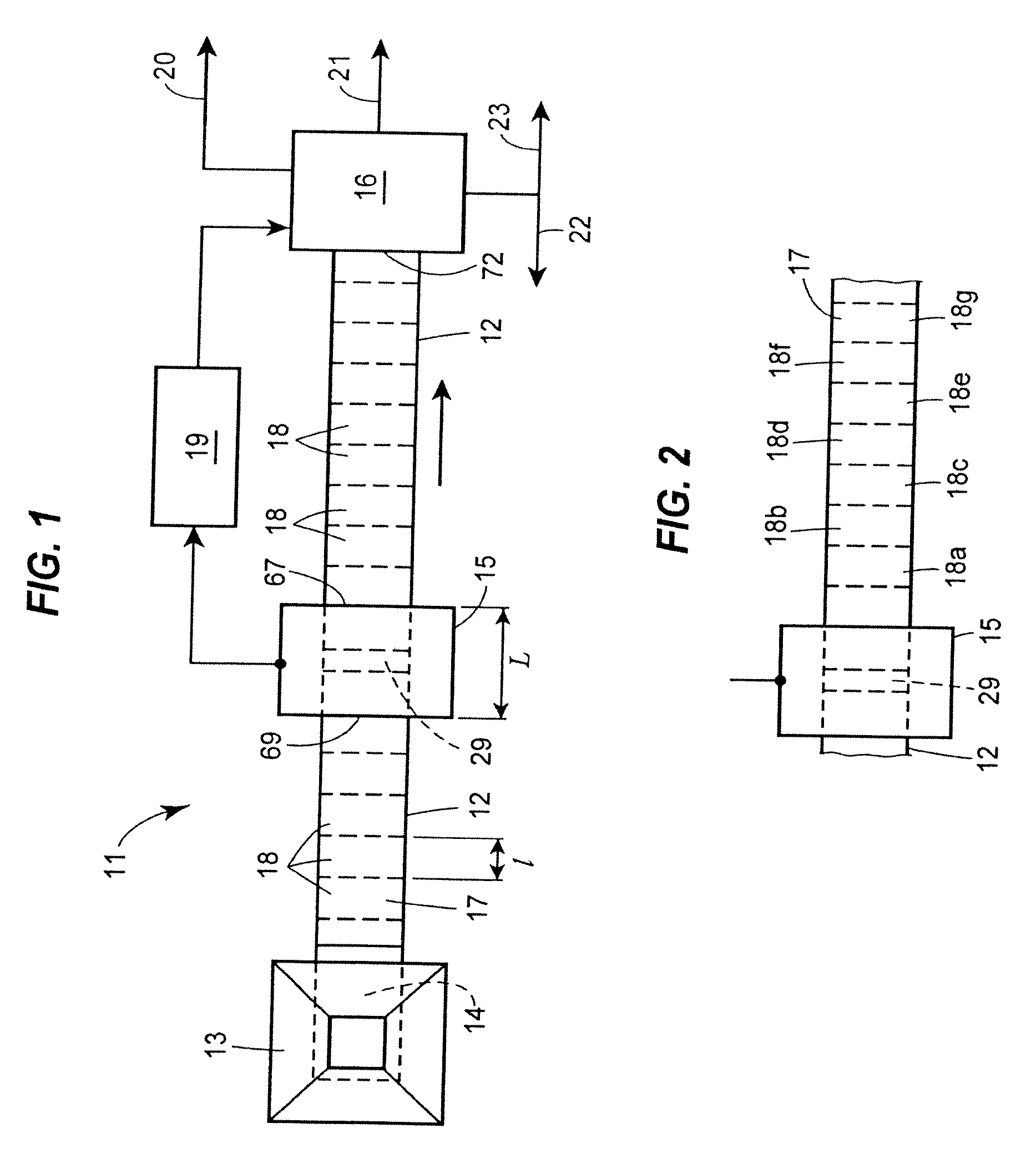Method for Bulk Sorting Shredded Scrap Metal
a scrap metal and bulk technology, applied in the field of scrap metal processing, can solve the problems of unavoidable shredded ferrous scrap, undesirable copper, and inability to remove copper from melted steel baths by refining, and achieve the effect of increasing valu
- Summary
- Abstract
- Description
- Claims
- Application Information
AI Technical Summary
Benefits of technology
Problems solved by technology
Method used
Image
Examples
example a
[0106]The reference composition programmed into the information processor specifies a minimum copper content of 0.20% for the increments that are to be diverted from the stream. An acceptable error on the mean for a copper content of 0.20% and above is 0.03%. More particularly, as noted above, steels that are resistant to atmospheric corrosion can have a copper content in the range 0.20%-1.0%. The tolerance for a copper content in this range can be ±0.03%. Accordingly, for a stockpile of diverted increments conforming to a reference composition specifying a copper content of 0.20% and above, an acceptable error on the mean can be 0.03%.
[0107]Assuming an error on the analyzer of 0.45%, the number of increments required to obtain an error on the mean of 0.03%=(0.45 / 0.03)2=(15)2=225. Each increment has a volume of about 9 feet3 and weighs about 630 pounds, so that 225 increments weigh 141,750 pounds, or about 71 tons, which is within the weight capacity of most rail gondola cars (i.e.,...
example b
[0109]The error on the analyzer is 0.9. The number of increments required to produce an error on the mean of 0.03 is (0.9 / 0.03)2=(30)2 or 900 increments, which, at an increment weight of 630 pounds is 567,000 pounds for 900 increments, or about 284 tons which exceeds the weight capacity of the largest rail gondola cars employed to transport ferrous scrap. Reducing the speed of the conveyor belt from one foot per second to one foot every four seconds increases the quantity of gamma rays detected for a given increment by a factor of four and reduces the effective error on the analyzer for a given increment by a factor of two, or from 0.9 to 0.45 (the error on the analyzer in Example A). Accordingly, the number of increments required to produce an error on the mean of 0.03 is (0.45 / 0.03)2=(15)2=225 increments which, at an increment weight of 630 pounds, is about 71 tons, as in Example A. At a conveyor belt speed of one foot every four seconds and an increment weight of 630 pounds, one ...
example c
[0110]The stream of shredded scrap is six feet wide and eight inches thick; the volume of an increment 3 feet long is 12 feet3, and the increment's weight is 840 pounds. The other process parameters, relevant to determining the error on the mean, are the same as in Example A. Accordingly, the number of increments required to obtain the desired error on the mean is the same as in Example A, namely, 225 increments. However, in this example, 225 increments weigh 189,000 pounds or almost 95 tons, which is within the weight capacity of the larger rail gondola cars. The volume of 225 increments at 12 feet3 each is 2,700 feet3, which is within the volume capacity of rail gondola cars that can handle 95 tons.
PUM
| Property | Measurement | Unit |
|---|---|---|
| length | aaaaa | aaaaa |
| length | aaaaa | aaaaa |
| length | aaaaa | aaaaa |
Abstract
Description
Claims
Application Information
 Login to View More
Login to View More - R&D
- Intellectual Property
- Life Sciences
- Materials
- Tech Scout
- Unparalleled Data Quality
- Higher Quality Content
- 60% Fewer Hallucinations
Browse by: Latest US Patents, China's latest patents, Technical Efficacy Thesaurus, Application Domain, Technology Topic, Popular Technical Reports.
© 2025 PatSnap. All rights reserved.Legal|Privacy policy|Modern Slavery Act Transparency Statement|Sitemap|About US| Contact US: help@patsnap.com



